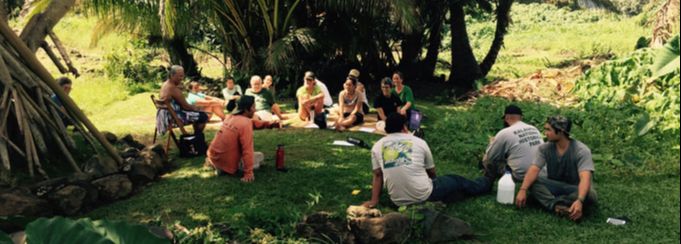
High school is a close-knit community where final exams are more important than half of each grade. The US's largest high schools are often found in the suburbs around cities like Birmingham in Alabama. Many of them have hundreds of students. Many excel in math and reading. Many are even given iPads to take to class.
Skyline High School
Located in Seattle, Washington, Skyline High School is the largest high school in the country. The school shares space with the new choice-option Realms High School, and its facility design allows the two schools to work together on learning opportunities. The shared spaces include a design studio and a gymnasium-sized open flex space. The two schools will also share bathrooms.
Skyline High School has more than 21,000 students and is the largest US high school. The school is known for its competitive athletic program as well as its rigorous college preparation curriculum. The school was founded 1997 and has won many state sporting championships.
Midwood High Schools
Midwood High School in Brooklyn is located in New York. It is part of the New York City Department of Education, which oversees public education in the city. The school is home to 3,938 students. The school's diversity is well known. It has 37% Asian students, 30% African American students, and 24% White, non-Hispanic, students. It has a highly selective program. About 3% send their seniors to Ivy League college. In addition, about 10% of students are eligible to receive free or reduced lunches.

The high school can be divided into three institutes. Each has its own curriculum and course offerings. Students are placed in classes that are relevant to the institute they want to study. Students in Humanities Institute need to study six terms of foreign-language courses. Students with acceleration credit must learn at least one language to be eligible for admission.
Dakota High School
Dakota High School in Macomb (Michigan) is the largest highschool in the state. The school is home 286 students in grades 9-12. It's the largest high school state-wide. The student-teacher ratio is 20.4 to 1. Its reading and math results were both better than those of the state average.
It covers nearly 400,000 square feet and serves northern Macomb County's educational needs. The school was built on an elevated site, which presented many challenges. Thanks to the material from the nearby river, this was possible. When it was finished, it was the largest high school in the US.
Fort Hamilton High School
Fort Hamilton High School in Brooklyn is a public highschool. It is located in Brooklyn and falls under the New York City Department of Education. It was constructed in 1941 and stands above the Lower New York Bay.
Fort Hamilton High School is home to a diverse student body and an effective educational program. The school boasts an active National Honor Society Chapter and a faculty that has advanced degrees. The school also offers extensive programs in music, theater, and business.

Wayzata High School
Wayzata High School is a comprehensive public highschool in Minnesota that serves more than 3600 students. Its campus is 80 acres and has four buildings and a baseball diamond. It has a student-teacher ratio of 20:1, which is significantly higher than the 14:1 state average.
With 177.8 full-time professors, it is one of America's largest schools. It costs $13,279 per student. It costs $13,279 per student more than any other high school within the Wayzata School District. We use data from several sources to find out the cost of Wayzata High per student. This includes the U.S. Department of Education’s National Center for Education Statistics and Census Bureau’s Bureau of American Life and Work.
FAQ
What is the best time to spend on each semester studying?
The time it takes to study depends on many factors.
Some schools may also require that you take certain classes every year. This means you might not have the freedom to take less courses during a semester. Your advisor can advise you on the courses that you must take each semester.
Is it necessary to attend college in order to be an early childhood educator
No, but you might want to consider going to college to prepare yourself for a future career in the field.
It is crucial to realize that teaching is not an easy job. Every year, many people are rejected. Many students also quit college after only one semester.
A teacher must meet all requirements.
What is a vocational school?
Vocational schools offer programs specifically for people who wish to pursue a career in a certain field. They can also offer training in specific skills and general education.
Vocational education has a significant role to play in society. It helps young people gain the skills they need to succeed. It provides students with high-quality learning experiences.
The vocational school offers a wide range of options to its students. These include certificates, diplomas and degrees, as well as apprenticeships and certificates. Vocational schools offer both academic and practical courses in math, science and English.
What is an alternative school?
Alternative schools are designed to provide students with learning disabilities with access to education through the support of qualified teachers who can understand their needs.
Alternative schools are designed to give children with special education needs the chance to learn in a normal classroom setting.
A lot of help is also available for them when they need it.
An alternative school isn't only for those who have been expelled from mainstream schools.
They are available to all children, regardless of their ability or disability.
How do I apply to college?
There are many options available for how to apply to college. Reach out to your high school guidance counselor, admissions representative or for more information. Online applications are popular among high schools. You can also get in touch with local colleges. Many colleges will accept applications through the Internet via their website.
If you choose to apply via mail, fill out the application. You will also need to write a personal story and attach copies of all documents. This personal statement allows you to describe why you choose to attend this institution and the benefits it could bring to your life. The personal statement helps you to communicate your motivations and goals to the admissions committee.
On our website, you will find samples of essays that can be downloaded.
What is homeschooling?
Homeschooling is a method of education where children learn at home from their parents. It is also known by the names private education or self-education.
Family members who want to teach their children at home can opt for homeschooling. This allows them access to a quality education while staying at home.
They educate their children right from birth through high school. They choose which subjects to study and how long each subject should last. Everything is learned by the student on their own.
Parents choose when to start teaching their children. Many schools recommend children attend classes starting at the age of four or five. However, some families choose to wait to begin teaching their children until they reach kindergarten.
You can use any number resources to help your children through the curriculum. Books, videos, websites, and even magazines provide valuable lessons.
Many families find homeschooling works well for their busy schedules. Parents can spend more time with their children than in traditional public schools.
Statistics
- Think of the rhetorical power of nineteenth-century abolitionist Harriet Beecher Stowe, Martin Luther King, Jr., or Occupy Wall Street activists with their rallying cry of “we are the 99 percent.” (bostonreview.net)
- These institutions can vary according to different contexts.[83] (en.wikipedia.org)
- They are more likely to graduate high school (25%) and finish college (116%). (habitatbroward.org)
- “Children of homeowners are 116% more likely to graduate from college than children of renters of the same age, race, and income. (habitatbroward.org)
- In most developed countries, a high proportion of the population (up to 50%) now enters higher education at some time in their lives. (en.wikipedia.org)
External Links
How To
What is vocational training?
Vocational education prepares students for the workforce after high school. Students are trained in specific skills to be able to do a particular job such as welding. Vocational Education also offers apprenticeship programs that provide on-the-job training. Vocational education stands out from general education. This is because it focuses less on general knowledge and more on developing skills for specific occupations. Vocational education's goal is to help students find employment after they graduate.
Vocational education could be offered at all levels, including primary schools, secondary school, colleges and universities, technical schools, trade schools as well community colleges, junior college, and four-year schools. There are many schools that specialize in specific subjects, such as nursing schools (law schools), medical schools, dental school, veterinary medicine and firefighting schools. These schools offer both practical and academic training.
In recent decades, many countries have made large investments in vocational training. The effectiveness of vocational training is still a controversial topic. Some critics argue that it does little to improve students' employability; others argue that it provides useful preparation for life after school.
The U.S. Bureau of Labor Statistics estimates that 47% of American adults possess a postsecondary certificate, or degree related to current occupation. This figure is higher among those with more education: 71% of workers aged 25-29 with a bachelor's degree or higher are currently employed in fields requiring postsecondary credentials.
In 2012, the BLS reported that nearly half of the nation's adult population had at least some form of postsecondary credential. One-third of Americans had a two year associate degree. Only 10% held a four-year bachelors degree. One fifth of Americans have a master's, or doctorate.
In 2013, the median annual wage for persons holding a bachelor's degree was $50,900, compared to $23,800 for those without a degree. The median wage for advanced degrees holders was $81,300.
The median wage for those who didn't complete high school was $15,200. Earn $13,000 per annum for those with less high school diplomas.